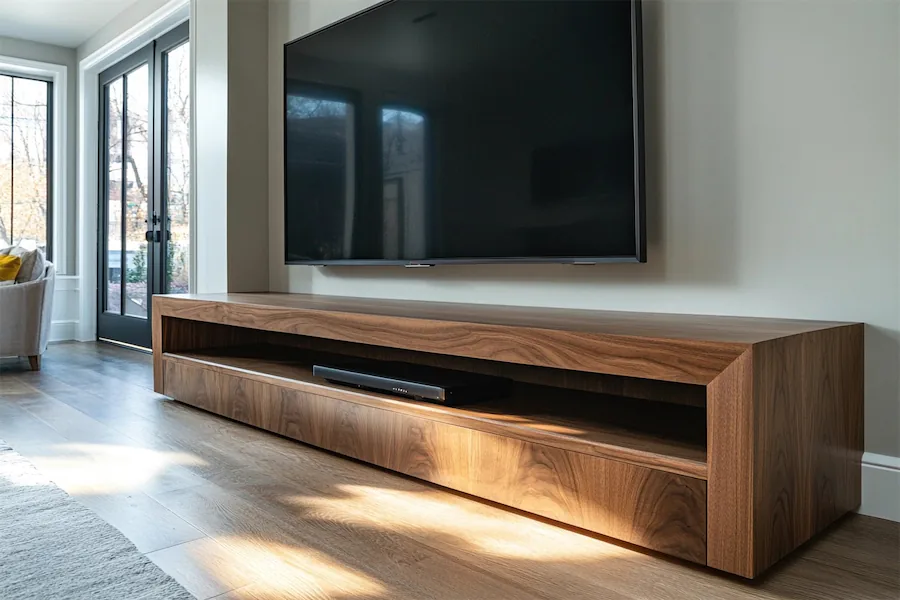Built-in TV stands are custom-designed furniture pieces integrated into a room’s architecture, providing a seamless and organized solution for housing televisions and related media equipment. These installations not only enhance the aesthetic appeal of a space but also offer functional benefits such as optimized storage and efficient use of space.
History and Origins of Built-in TV Stands
The concept of built-in furniture dates back to the early 20th century, with architects like Frank Lloyd Wright incorporating built-in elements to create cohesive and functional interiors. As televisions became household staples in the mid-20th century, the need for dedicated storage solutions led to the development of built-in TV stands. These designs evolved to accommodate technological advancements and changing interior design trends, resulting in the versatile built-in TV stands seen today.
Key Features of Built-in TV Stands
- Customization: Tailored to fit specific dimensions and styles, built-in TV stands can be designed to match the room’s decor and accommodate various sizes of televisions.
- Integrated Storage: They often include shelves, cabinets, or drawers to house media components, gaming consoles, and accessories, reducing clutter and maintaining an organized appearance.
- Aesthetic Integration: By blending with the room’s architecture, built-in TV stands create a cohesive look, making the television area a harmonious part of the overall design.
- Space Efficiency: Utilizing wall space effectively, these stands free up floor area, making them ideal for both small and large rooms.
Applications of Built-in TV Stands
- Living Rooms: Serve as focal points, combining entertainment needs with display areas for decorative items or books.
- Bedrooms: Provide a discreet and stylish solution for incorporating a television without overwhelming the space.
- Home Offices: Offer a professional setup for video conferencing and multimedia presentations, integrating technology seamlessly into the workspace.
Considerations When Choosing a Built-in TV Stand
- Design and Style: Ensure the built-in complements the existing decor and architectural elements of the room.
- Functionality: Assess storage needs and incorporate features like adjustable shelving or concealed compartments for equipment and accessories.
- Material Selection: Choose durable materials that align with the room’s aesthetic and can support the weight of the television and other components.
- Professional Installation: Given the complexity of built-in designs, consulting with a professional carpenter or designer is advisable to achieve a high-quality finish.
Conclusion
Built-in TV stands offer a sophisticated and practical solution for integrating televisions into various spaces. Their customizable nature allows homeowners to tailor designs to their specific needs and preferences, enhancing both the functionality and visual appeal of a room. By considering factors such as design, functionality, and professional installation, a built-in TV stand can be a valuable addition to any home.
